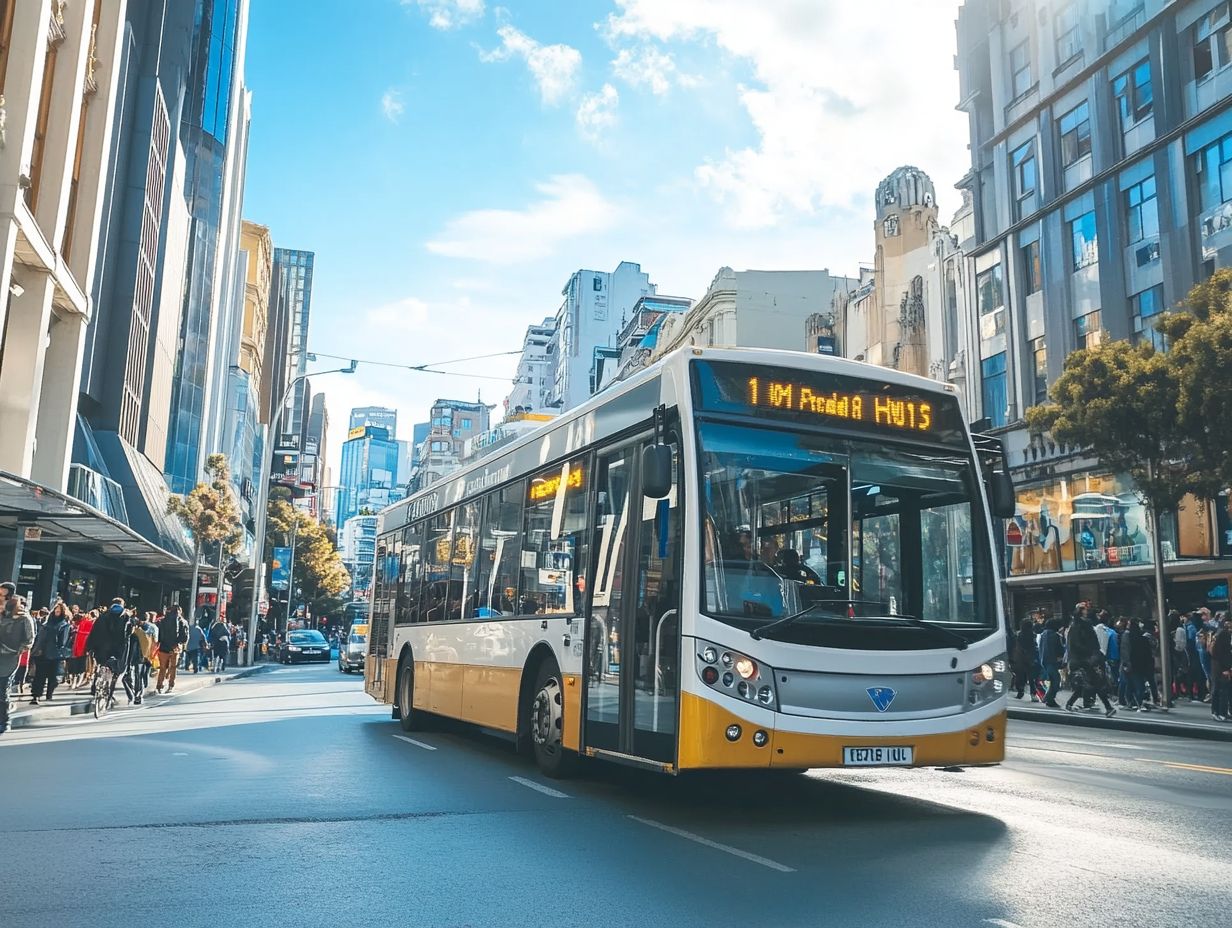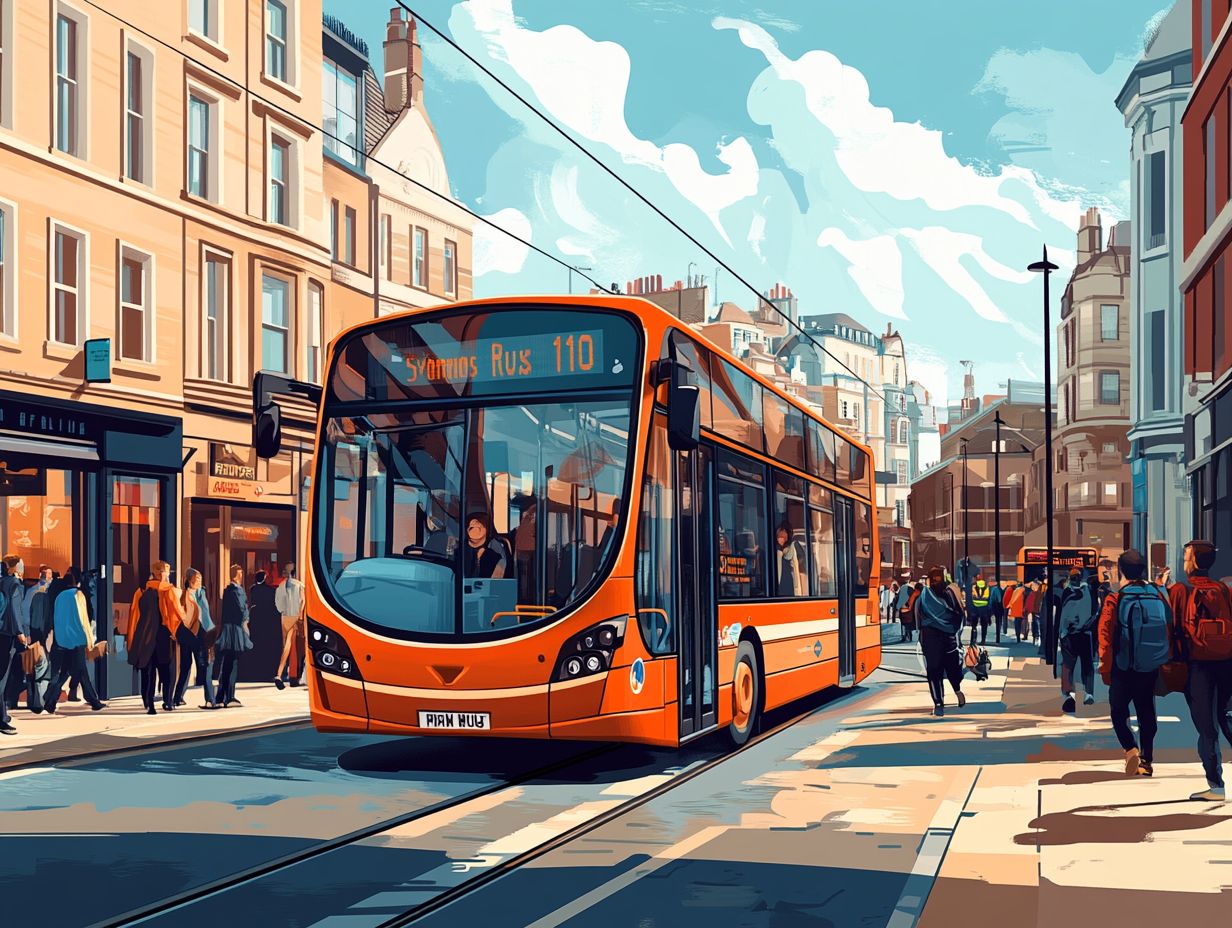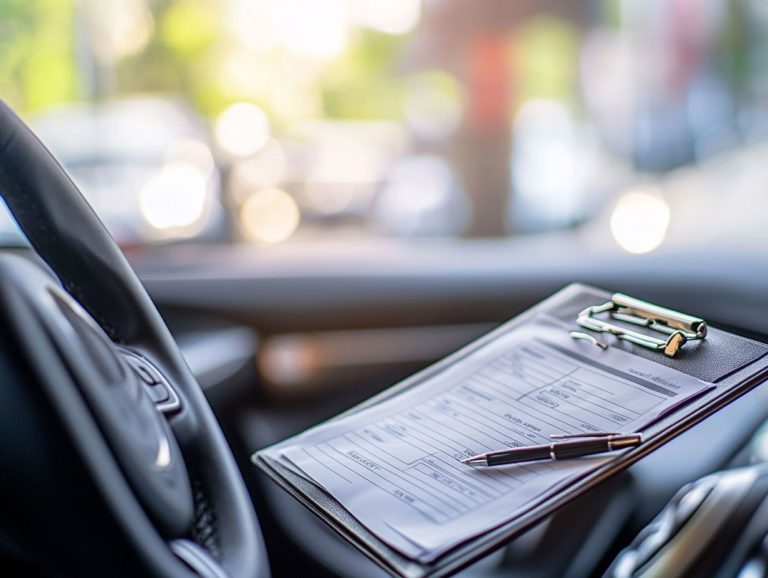Is Auto Insurance Required for Public Transport?
Navigating the realm of auto insurance can present challenges, especially regarding public transport. Understanding the details of coverage is essential for protecting both passengers and drivers.
This article delves into the fundamentals of auto insurance, emphasizing legal requirements, benefits, and costs tied to various coverage options.
This article also explores alternatives to traditional insurance, empowering you to make informed decisions tailored to your public transport needs. Continue reading to uncover all the insights you need.
Contents
- Key Takeaways:
- Understanding Auto Insurance for Public Transport
- Legal Requirements for Public Transport
- Benefits of Auto Insurance for Public Transport
- Costs and Coverage Options
- Alternatives to Auto Insurance for Public Transport
- Frequently Asked Questions
- Is Auto Insurance Required for Public Transport?
- What types of transportation are considered public transport?
- Do I still need auto insurance if I use public transport?
- Why is auto insurance not required for public transport?
- Can I use public transport instead of having auto insurance?
- Is auto insurance required for ride-sharing services?
Key Takeaways:

- Auto insurance is required for public transport to comply with state and local laws.
- Auto insurance provides protection for passengers and drivers in case of accidents or injuries.
- The cost of insurance for public transport varies based on location and type of coverage, but alternatives like self-insurance are available.
Understanding Auto Insurance for Public Transport
Understanding auto insurance for public transport is essential for transit authorities, transportation carriers, and operators of passenger carriers in the United States. The world of public transportation is constantly changing, bringing unique challenges and accident risks that require thorough insurance policies.
Whether you need liability insurance to cover costs if someone gets hurt in an accident caused by you or collision coverage for vehicle damage, having the right insurance is crucial for protecting valuable goods and ensuring transport safety.
With options like medical coverage and comprehensive coverage, you can manage the risks associated with public transport services, including Nevada buses and commuter vans, while navigating legal requirements and implementing risk control strategies.
What is Auto Insurance?
Auto insurance serves as a vital financial safeguard, designed to cover many risks that come with owning and operating a vehicle, especially in public transportation. You can find a range of insurance policies tailored to meet different needs, including liability coverage, collision coverage, and comprehensive coverage.
This financial protection becomes even more essential in public transport, where vehicles often carry several passengers at once. Liability coverage helps cover costs if someone gets hurt in an accident caused by you, ensuring that you are protected from significant financial burdens. On the other hand, collision coverage looks after your vehicle, covering damages regardless of who is at fault in an accident.
Comprehensive coverage goes a step further by addressing non-collision incidents like theft or natural disasters, providing you with a well-rounded safety net. By understanding these various types of coverage, public transportation providers can navigate the unique risks they encounter, ultimately enhancing safety for both passengers and drivers.
Legal Requirements for Public Transport
Legal requirements for public transport in the United States differ greatly from state to state, making it essential to have a thorough understanding of local laws and insurance policies.
As you navigate the intricate landscape of regulations, knowing the specific insurance coverage mandated, including liability insurance, keeps you safe and compliant. This knowledge safeguards you against potential legal and financial repercussions that can arise in this complex environment.
Don’t wait! Ensure you have the right coverage in place today.
State and Local Laws

State and local laws shape public transportation by dictating insurance requirements for transit authorities. These regulations protect passenger safety and enhance risk management.
Across the United States, different regions implement varying regulatory measures, impacting the coverage necessary for buses, trains, and other transit modes. While some states impose minimum coverage amounts that align with national standards, others may enforce stricter criteria tailored to local risk factors. You ll need to navigate this complex legal landscape, which can affect your operational budgets and insurance procurement strategies.
As regulations evolve, transportation carriers must stay nimble, adjusting their policies to align with local mandates while prioritizing public safety.
Benefits of Auto Insurance for Public Transport
The advantages of auto insurance for public transport are numerous. By offering comprehensive coverage and liability insurance, public transportation services significantly reduce the financial risks tied to road accidents, injury lawsuits, and damage claims.
This protects passengers and drivers alike. When accidents happen, they are shielded from unexpected costs, enhancing the overall integrity of the transit experience.
Protection for Passengers and Drivers
Auto insurance provides essential protection for both you and your fellow passengers in public transport settings. It ensures that, in the event of an accident, you have the necessary resources to cover medical expenses and liability claims. This safety net builds trust, making commuters feel secure!
Such protective coverage is vital for creating a secure environment where you can confidently use transport services, free from the worry of financial burdens.
Comprehensive auto insurance policies typically include provisions for personal injury protection and uninsured motorist coverage, crucial for addressing healthcare needs after an accident.
With this insurance in place, the risks associated with liability claims are greatly reduced. Robust insurance minimizes liability risks, ensuring prompt resolutions that enhance peace of mind for everyone involved. In the end, having strong auto insurance promotes a culture of responsibility and safety that benefits not just drivers and passengers but also elevates the community’s perception of public transit options.
Costs and Coverage Options
Understanding insurance costs and coverage is essential for transit authorities. Various options exist, like collision and comprehensive coverage, each with different rates shaped by various factors.
Factors Affecting Insurance Rates

Several factors influence insurance rates for public transport. The type of vehicle you operate, the risks associated with accidents, and your overall risk management strategies all play a role. Insurers carefully assess these variables to determine the appropriate coverage costs.
The type of vehicle you use be it a bus, taxi, or freight truck plays a crucial role in shaping those rates. Larger and more specialized vehicles typically attract higher premiums. Your company’s claims history is another pivotal reference; frequent claims can raise a red flag for insurers, categorizing you as a high-risk carrier and driving costs up.
Implementing proactive risk management practices, like regular vehicle maintenance, comprehensive driver training programs, and embracing advanced technology for safety tracking, can effectively mitigate expenses. By adopting these strategies, you not only enhance safety but also convey to insurers your commitment to minimizing potential liabilities, ultimately paving the way for more favorable insurance terms.
Types of Coverage Available
In the realm of public transport, you ll encounter various types of insurance coverage, including liability insurance, collision coverage, comprehensive coverage, and medical coverage. Each type addresses specific risks tied to operating passenger carriers and commercial vehicles, ensuring you’re well-protected.
Understanding these diverse coverage options is essential for you, whether you’re a transit authority or a transportation carrier. As you navigate the complexities of managing public transport systems, liability insurance shields you from claims arising from accidents or negligence, securing your financial footing.
Collision coverage compensates you for damages resulting from accidents. In contrast, comprehensive coverage offers protection against non-collision incidents, such as theft or vandalism.
Medical coverage is critical, providing benefits for passengers injured while in transit. Choosing the right type of insurance transcends mere compliance; it bolsters operational stability and enhances community safety. Be sure to carefully evaluate each option based on your specific transit needs to make informed decisions that support your operations and the safety of those you serve.
Alternatives to Auto Insurance for Public Transport
Exploring alternatives to auto insurance for public transport is crucial for transit authorities and transportation carriers aiming for comprehensive risk management solutions.
Options such as self-insurance provide tailored financial protection, enabling you to manage your unique risks without depending solely on conventional insurance policies. This approach enhances your risk management strategy and allows for greater flexibility and customization in addressing your specific needs.
Self-Insurance and Other Options
Self-insurance stands out as a compelling alternative for public transport entities, enabling you to retain financial risk and manage claims internally. This approach can yield substantial savings but demands a thorough grasp of risk management and financial strategies.
By choosing self-insurance, you gain enhanced control over your liabilities, allowing you to customize coverage that aligns with your specific operational needs. One of the standout benefits is the opportunity to lower premium costs, freeing up funds to invest in critical areas like upgrading your fleets or improving service quality.
This strategy has its challenges. You must accurately evaluate your risk exposure, maintain adequate reserves, and establish efficient claims processing protocols. Implementing effective risk management practices, such as conducting regular safety audits and providing robust training for drivers, will bolster your self-insurance approach, ensuring you remain financially resilient in the face of unexpected events.
Frequently Asked Questions

Is Auto Insurance Required for Public Transport?
No, auto insurance is not required for public transport. Public transport refers to transportation services available for use by the general public, such as buses, trains, and subways.
What types of transportation are considered public transport?
Buses, trains, subways, light rail, and other forms of public transportation are considered part of the public transport system. These services are usually operated by government agencies or private companies and are available for use by anyone.
Do I still need auto insurance if I use public transport?
Yes, even if you primarily use public transport, it is still important to have auto insurance. Having insurance can protect you in case of an accident while driving a friend’s car or using a rental vehicle.
Why is auto insurance not required for public transport?
Public transport vehicles are typically owned and insured by the transportation company. As a passenger, you are covered under their insurance policy. This is why auto insurance is not required for public transport.
Can I use public transport instead of having auto insurance?
No, public transport is not a substitute for auto insurance. While using public transport may reduce your need for personal auto insurance, it is still important to have coverage for any vehicles you own or may drive in the future.
Is auto insurance required for ride-sharing services?
Yes! If you re using your personal vehicle for ride-sharing services like Uber or Lyft, you absolutely need the right auto insurance.
Many standard auto insurance policies won’t cover this, so make sure to check your options and consider getting extra insurance!






